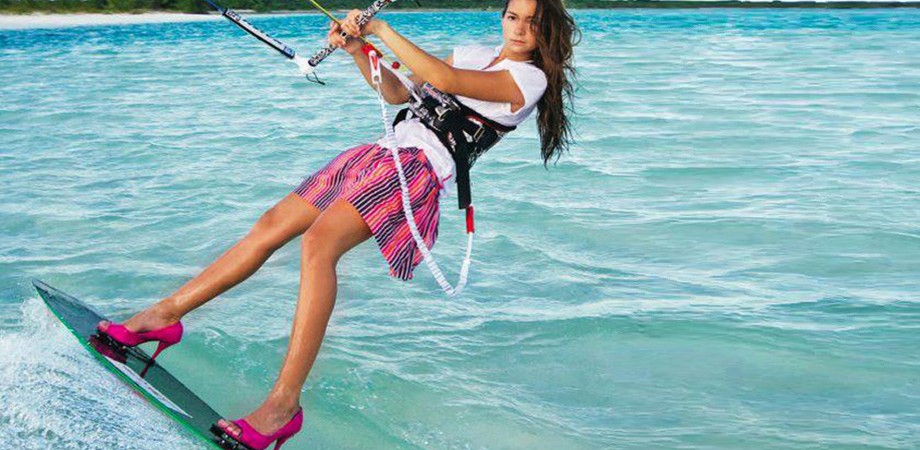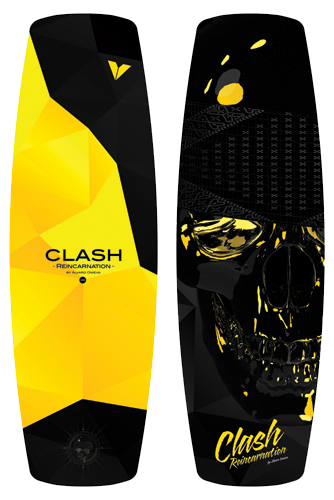
[icegram campaigns=”7743″]
As part of our investigation into the brands that are changing the face of kitesurfing we took a look at Clash boards “Reincarnation 138”.
A good friend of mine, an ex pro rider and the most knowledgable man I know when it comes to kitesurfing, handed me one of these to test not saying a word. After I’d given him my feedback, he told me with a fire in his eyes that it was the best board he’d ever ridden. Unfortunately for him he’s now sponsored by a different company and so cannot ride it but he still extolls it’s virtues to anyone who will listen, even over his sponsors boards.

So what did we think?
First up the board looks great. The graphics are stylish without being too showy and the finish is excellent, giving the board a very expensive look.
The first thing everyone checks (without really knowing why they are checking it in my experience) is the flex of the board. Flex basically affects 2 things,
- the boards rocker, so as more pressure is put onto the board the board flexes more giving more rocker
- the cushioning you feel when you land (as the board bends rather than your kneecaps)
These 2 effects then go on to effect a huge amount of other things which is way beyond the scope of this article. Simply put flex is neither a good thing or a bad thing, it depends on what you’re looking for in a board, in certain conditions for certain riders a lot of flex is a good thing change the rider and the conditions and little flex is better.
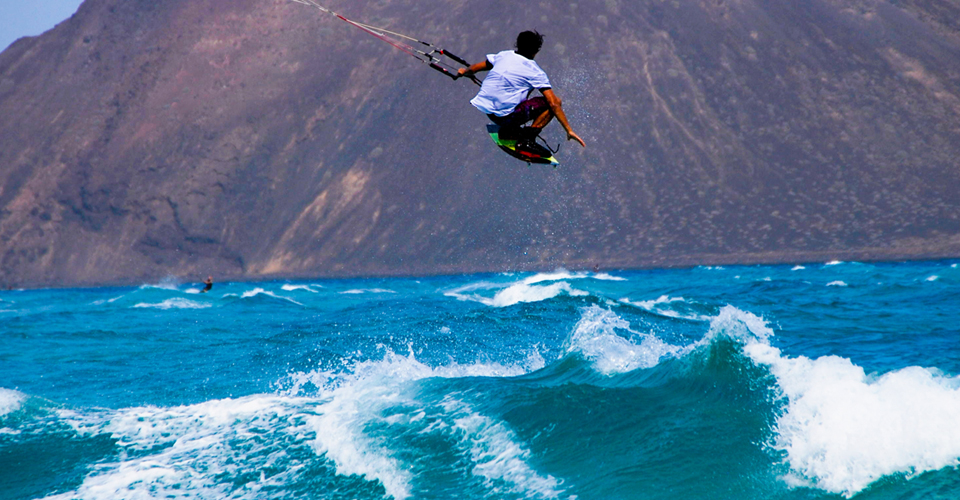
THIS BOARD HAS FLEX!
I’ve never seen a board that will bend so far and not break, it’s quite simply spell binding to watch as it just keeps bending and bending as you stand by just waiting for it to crack.
What this translates to on the water is a really smooth ride. Especially here in Tarifa where we can get very bumpy conditions this board carved through the chop like a hot knife through butter. Most of the other boards I’ve ridden here are much stiffer and they feel like they’re trying to throw you off (a little like riding a bucking bronco). This may not be a feel that everyone likes or that works in all conditions but in the choppy conditions of Tarifa it felt beautiful.
This abundance of flex also means that you can really ‘stack’ the board up before you pop, giving you a lot more power to initialize any tricks you’re working on and leaving your landings feel nice and cushioned.
The other thing you visually notice very quickly is that the fins are ever so slightly angled so rather than being at 90 degrees to the board they are very slightly pointed outwards, like you might find on a race board, but no where near as extreme. As a result the fins sit straighter in the water when you’re engaging the edge, and even though they are only angled maybe 10 degrees you really can feel the extra bite in the turns, allowing you to really crank those turns hard.

But…
One area I was disappointed was the pads and straps, they were bloomin uncomfortable and for the first session it felt like my feet were being sawn in 2. This did get better over a couple of sessions as they adapted to my feet but at the start they were agony. They are built like this for a reason and once they adapt to your feet they fit like a glove without the usual stretch, but beware for the first few rides. Another thing that we didn’t experience ourselves but have been reliably informed is that after a while the pads start to feel a little thin.
In Summary
The board has a stack of other features such as the V outline, Eclipse Rails etc etc which obviously all add to the feel of the board but I find going onto detail on these things often clouds the matter, and while they certainly change the way the board handles I cannot with any confidence say what effect that had while I was riding.
What I can say is that this board felt great in the bump and jump conditions we get here in Tarifa. It cut through the waves beautifully, handled like a prince, looked great and once the straps moulded to my feet was an awesome experience to ride.
Again the overwhelming thing about this board is the price and value for money. At the time of writing the retail price of this board, complete with fins, pads and straps is 499 €. Again this is made possible by the fact that Clash only sell direct from their website, so there is no middle man to take a cut and artificially inflate the price. My advise – go and buy one of these boards fast…they are the best value for money I have seen in ages and left me (who had been thinking about selling my twin tip in favour of my surf board) desperate to get out and throw some tricks again.
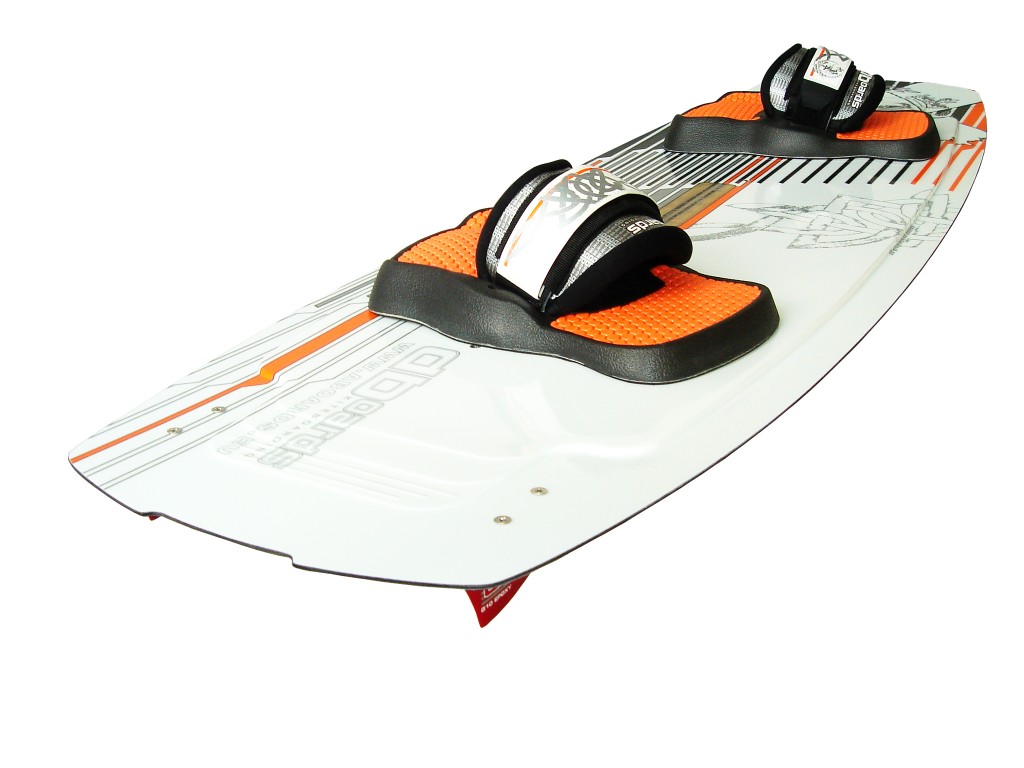

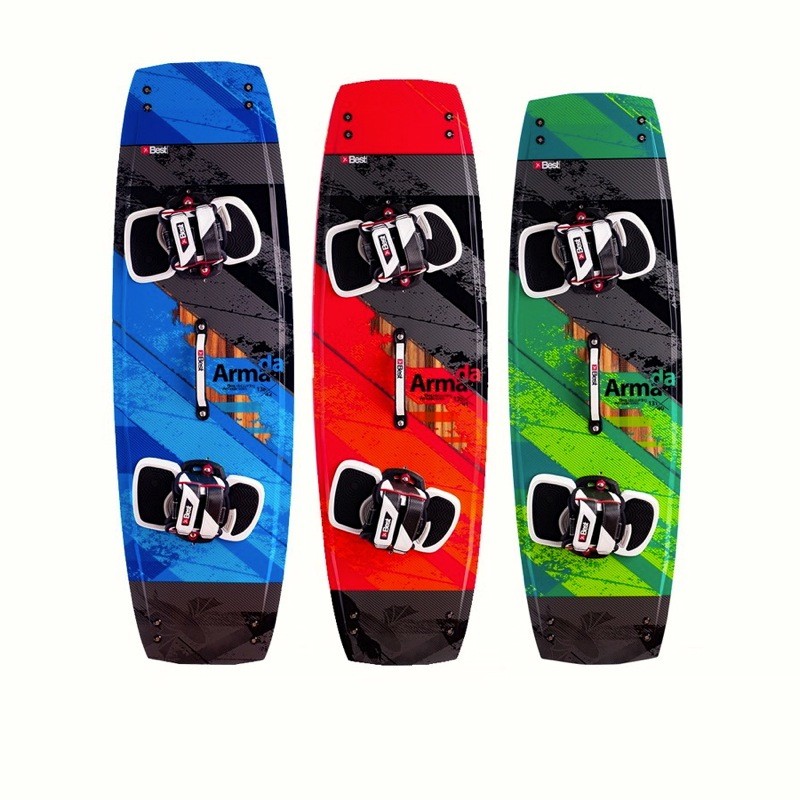
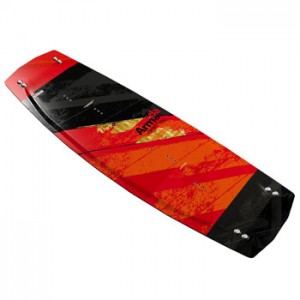
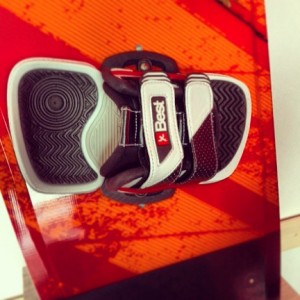 Bear Traps to Breaking Point
Bear Traps to Breaking Point


